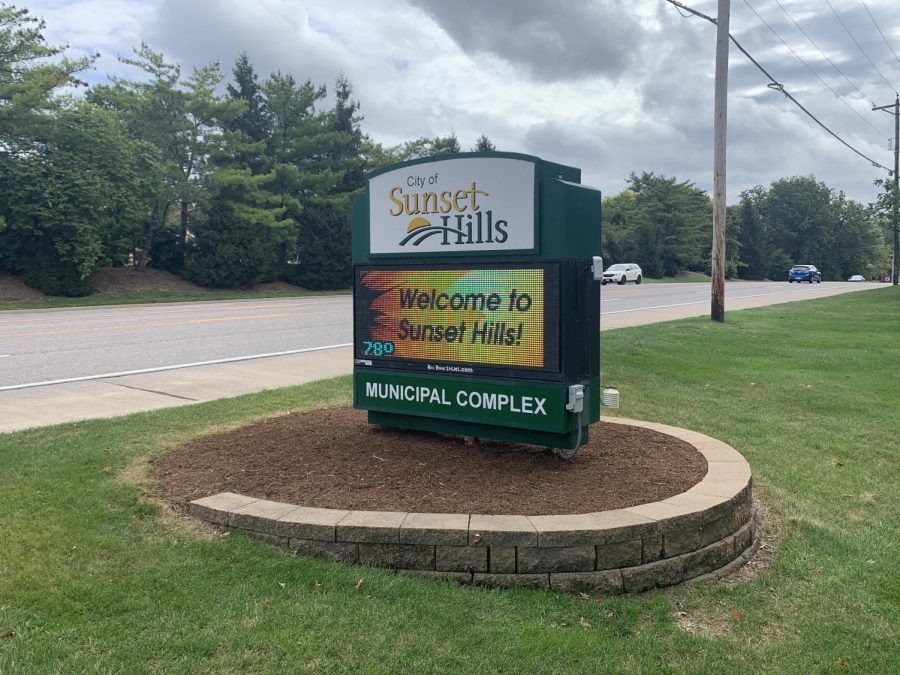Red-light cameras “produce results,” reducing both violations and accidents, a representative of American Traffic Solutions told the Crestwood Board of Aldermen last week.
Dan Reeb, senior business development manager for American Traffic Solutions, or ATS, told the Board of Aldermen during an Aug. 25 work session his company operates photo-enforcement programs in 15 U.S. states and three countries. The company, headquartered in Scottsdale, Ariz., has more than 1,500 systems under contract, including more than 160 in Missouri.
“… The reason we’re able to have 160 camera systems in the state of Missouri is because they do produce results. We started off in Arnold, Mo. We’ve seen great results as far as reducing accidents and reducing violations. The city of St. Louis, same way …,” he said, later adding, “… No matter where you put these cameras up, you do produce safety results …”
Reeb previously had addressed the Board of Aldermen during a March 13, 2007, work session, to discuss red-light cameras, but the issue was not pursued further.
Earlier this year, a Revenue Committee of residents appointed to study ways of enhancing city revenue included in its final recommendations a proposal that aldermen “review red-light cameras and determine whether such devices should be implemented in the city of Crestwood.”
In June, the city’s Police Board recommended the red-light camera issue be moved forward for consideration by the Board of Aldermen. But after hearing a presentation by Police Chief Michael Paillou in which he recommended aldermen consider a future work session with ATS representatives to discuss red-light cameras, the aldermen voted 4-2 not to have the work session.
However, Mayor Roy Robinson said Aug. 11 he would schedule a work session on red-light cameras and bypass a board motion, which City Attorney Rob Golterman said was permitted because it was not a legislative issue.
During his presentation, Reeb showed aldermen a video clip of near miss between a school bus and another vehicle in front of Rockport Heights Elementary School in Arnold, the first city in Missouri to use red-light cameras.
“… This is the reason why the city wanted to implement a red-light camera program in their city,” he said. “As you can see, the violator totally ignored the red light and fortunately, the school bus driver was paying attention and was able to stop prior to a collision …”
After showing several more videos of accidents involving red-light violations at intersections, Reeb said, “… What our camera system and what photo enforcement is about is reducing these types of incidents at intersections, and we have statistics … that show you that these cameras do work as far as modifying driver behavior. People stop speeding. They start paying more attention at these dangerous intersections …”
Reeb said his company’s photo-enforcement program at intersections generates fine revenue allowing the program to be funded solely by violators and not taxpayers.
Regarding the city of Arnold’s program, he said, “… They have four monitored intersections along 141 and Jeffco Boulevard. They had fatalities there prior to the implementation of our program. They’ve had zero fatalities since the implementation of photo enforcement at these intersections and at that school crossing, they had zero accidents in 2008. So they’re very happy with the safety results from it …”
At a camera-enforced intersection, Reeb said, “… It’s important to note that we don’t take a photograph of every vehicle that goes through the intersection. We’re only going to capture people who break the law … Our camera system is actually dormant, all except for the video camera … But the actual digital photography where we can zoom in and get the license plate and really get close up to the car, we’re only taking pictures when that light is in the red phase and that vehicle has actually gone through the red light …”
Two still photographs are taken of a vehicle running a red light, including a clear image of the license plate from one of the actual violation images, while a video camera also records the actual violation.
“… Not only are you going to have still photos of the actual violation, but you’re going to have a video clip …,” Reeb said. “What it allows law enforcement officers to do is use it for accident reconstruction, allows traffic engineers to see exactly why accidents are occurring at that intersection and maybe there’s other engineering changes you can make based on this video evidence. It’s a 24/7 in the feed so the Police Department would be able to tap in and look at that intersection. If there was an incident there, they could take a look at that intersection prior to sending out an emergency vehicle …”
Reeb said Crestwood police would review the still photographs and video clip to determine if a red-light violation actually occurred.
“… We’re not a private company doing law enforcement. What we’re doing is providing the evidence of an alleged violation of the traffic signal. So we’re taking pictures of the violation out at the site …,” he said. “… We send that off then to a police officer, who is going to then review all that evidence and then based on their training and understanding of the city ordinance and state law regarding red-light violation, they’re going to make a determination on whether or not that’s a violation. It’s not something that we make a decision on. So it’s not a machine just spewing out tickets. There’s actually then going to be that law enforcement element that’s going to look at these and determine whether or not that was a violation …”
Those receiving tickets issued by police can view online the two still photos and the video clip, Reeb said.
“… They can actually look for themselves at the exact same evidence that law enforcement has against them and the court has against them as far as this alleged violation … So needless to say, the challenge rate on these is very low. Most folks, when after they look at the video, they’re going to realize I made a mistake. I wasn’t paying attention. I ran the red light …,” he said.
Responding to a question from Ward 2 Alderman Chris Pickel about the legality of red-light cameras, Reeb cited an unsuccessful legal challenge to Arnold’s program.
“… Several violators had filed a federal lawsuit challenging a violation of their civil rights and we’ve seen that in other jurisdictions around the country,” he said. “There hasn’t been a federal court that has held this to be unconstitutional anywhere in the country, and then just recently in that Arnold case, the federal judge did throw out the case and said it’s a perfectly reasonable way for a city to implement a public-safety program …”
Ward 1 Alderman Darryl Wallach later said, “… I’ve seen some studies where the enforcement of the cameras actually may increase rear-end accidents rather than the side-impact accidents.”
Reeb said, “… There’s some statistics out there that seem to imply that, but what they don’t show is that over time, all accidents will decrease because whenever you implement a program where you’re making vehicles stop where they weren’t stopping before, whether it’s just erecting a traffic-control device at all, traffic engineers will tell you: At the beginning, we’re going to have possibly additional accidents — usually the rear ends, which are less severe, and it’s just somebody who’s not paying attention and runs into the back of somebody. But the good news is you have visual evidence of every accident that occurs. So if there was an increase in accidents that was caused by the equipment, you would have that visual evidence that the city could figure out then what to do with it … Over time, our empirical evidence shows that all accidents go down …”
No action was taken by aldermen after Reeb’s presentation.




















